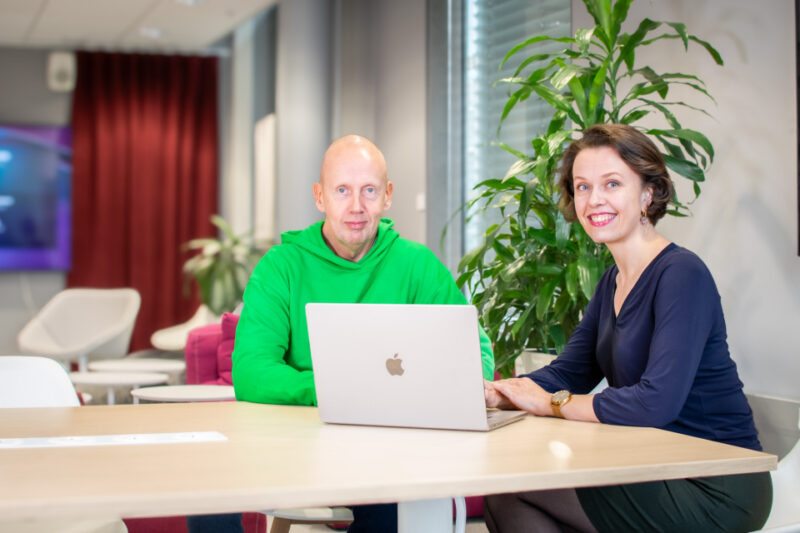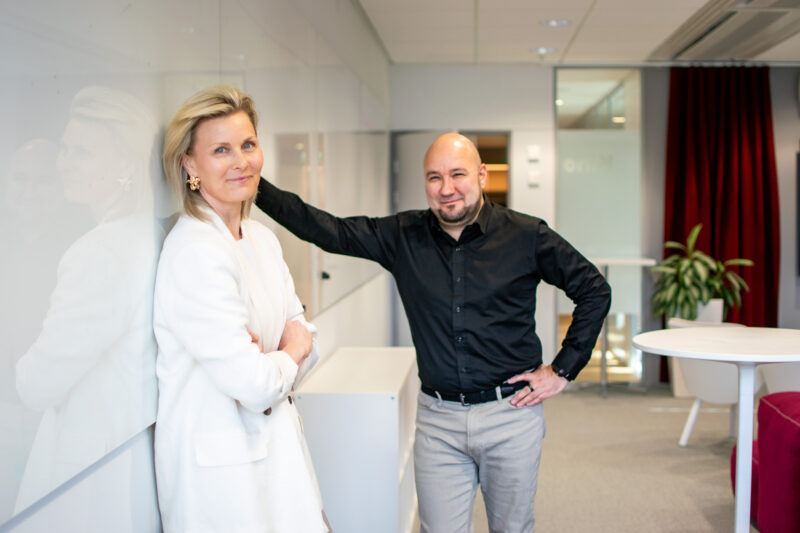Hold on to skills – Outsource carefully
Olivia Fränti explains, why you should focus on developing change capabilities and why you need to set boundaries on outsourcing.
We often hear that Artificial Intelligence and technology threaten our jobs – not to mention our humanity. The real challenge isn’t so much the technology itself, but how we humans choose to use it. Let’s take a moment to reflect on this.
Change for the sake of change seldom leads to significant results. Even the concerns we have about AI often stem from the fact that we don’t know how to best utilise it. Nor do we see the real benefits of AI in the day-to-day life of individuals, teams, or organisations. The key lies in how we manage, reinforce, and maintain change while fostering responsibility and expertise amongst those affected by it.
Too often, I see companies outsourcing their development projects completely. An army of consultants takes over for a while, and when they leave, they take all the know-how and knowledge gained during the project with them.
Instead of treating change management as a one-off project, we must focus on continuously developing and enhancing people’s skills and capabilities. This should not only occur during the change process itself, but also as an ongoing development after the initial project is finished. The expertise gained during the project ensures that the goals of renewal and progress are sustained even after its conclusion.
Based on my extensive experience in change management, I’ve found that the key to success is creating true value, fostering genuine partnerships, and supporting one another. It is the responsibility of the change management partner to transfer all their knowledge to the organisation undergoing the change.
Are you keeping up with change?
Technology, AI, and global platforms are revolutionising the way we work and innovate. At the same time, they offer unprecedented opportunities for individuals, teams, and organisations to evolve. We live in an era where change occurs faster than ever before, and those who fail to keep up risk falling off the moving train. If all the know-how leaves the company along with the external consultants, there is little chance for lasting progress.
On the other hand, the need for effective change management is greater than ever. The mere existence of technology, such as AI, doesn’t lead to any improvements without the skills to use it. The winners in this race are those who adapt quickest to change and make the most of new technologies, such as low/no-code platforms.
At the end of 2024, we formed a hypothesis: Finnish companies have untapped productivity potential that can be unlocked through effective change management. Our theory was proven correct: only 28% of the participants in our market study* agreed that the changes implemented in their organisation had contributed to upskilling their workforce.
Genuine results are achieved only by making sure that all skills are retained in the organisation – or, preferably, enhanced. In my own projects, I always aim to transfer as much knowledge and skills as possible to the customer during the project. This fosters business growth, strengthens capabilities, and drives lasting improvement. In other words, those who utilise all aspects of change management will be the ones to successfully take the leap in productivity.
Utilise skills and set the right goals
The leap in productivity happens when the gap between goals and existing potential is bridged. This doesn’t happen just through technology or reports but by adopting, applying, and refining new ways of working within the organisation.
In the end, achieving a productivity leap is relatively straightforward. The key is to set the goals high enough while making sure that we create true value throughout the change. Value creation brings a competitive advantage and creates an environment of business development and growth.
By managing the change correctly, a company can adopt a strong operating model that can be continuously improved. Both employees and management learn to challenge themselves and develop operations as well as ways of working. People are no longer just pawns in the change process but its true drivers.
Understanding the opportunities presented by technology is also crucial. As I mentioned earlier, AI can be seen as a threat, but in a successful change process, its role is to accelerate progress. It frees up resources for more meaningful tasks that AI cannot handle.
Another critical factor is the adoption of low/no-code solutions, rather than relying solely on traditional coding. Ready-made platforms make daily tasks easier for personnel and give them the opportunity to develop and grow without requiring deep technical knowledge, which is often concentrated in just a handful of people.
Three steps to successful change
This approach creates a new model of continuous development, eventually becoming an integral part of the company’s everyday operations. Whether the company is small or large, or even in the public sector, the model is relevant to all. After the actual change process, continuous change and development become part of the employees’ everyday lives, enhancing their skills, and bringing increasing value to the company.
1. Involve the right people. Allow your employees to solve problems themselves. Challenges are best overcome where they arise, not in the executive boardroom. Employees equipped with the right tools and knowledge are better able to improve and refine processes independently. This doesn’t just eliminate inefficiencies but frees up valuable time for more meaningful tasks – those that create customer value while motivating employees.
2. Give responsibility. Once employees understand the possibilities of technology as well as the strategic needs of the organisation, development will continue even after the initial project ends. New working methods take root and begin to grow within the organisation, establishing a foundation for sustainable development.
3. Foster a culture of continuous learning. Innovation and development are not the sole responsibility of just one department, just as IT, but shared goals for the whole organisation. With the right leadership model, continuous development becomes a part of every employee’s workday, from leadership to customer service and development teams. In this type of corporate culture, employees are empowered to take responsibility, try new things, and share their insights. This not only supports growth but also transforms the organisation into a vital, continuously renewing one, fostering a culture where development is everyone’s business.
Prioritise people and develop skills
An external partner must also know when to step aside. At Sofigate, we have extensive experience in successfully managing change, and we are familiar with both the pitfalls as well as the success factors of the process. This is why I dare to claim that only by involving people in the process can a change truly succeed.
In the model described above, both the company and change management partner are equals, walking side by side towards a successful change implementation. The partner’s role is to ensure that knowledge is transferred to the company during the process. When we involve people, rather than just focusing on hard facts, employees become engaged, and their job satisfaction increases alongside their capabilities.
After a successful transformation, a company’s revenue increases, customer experience improves, and employees become more committed to the company and their job, ensuring that skilled people stay rather than leave. Don’t let skilled professionals slip away, instead, make every person a driver of change. This is the best investment your organisation can make.
This is the fourth part of the blog series diving deeper into Sofigate’s market study “Looking for a Leap in Productivity”. Read the other parts of the blog series:
A small facelift or a proper renewal? – Set your aim high enough in your next IT project
A one-team project or a cross-functional collaboration? – This is the recipe for a productivity leap
From inclusion to true participation – Put people at the heart of your IT project
About the author:
Olivia Fränti is a Business Executive at Sofigate. She is passionate about managing change and understanding human behaviour.

*The “Looking for a Leap in Productivity” market study was conducted by Sofigate and completed in October 2024, N=32.
Download the “Looking for a Leap in Productivity” market study report.


